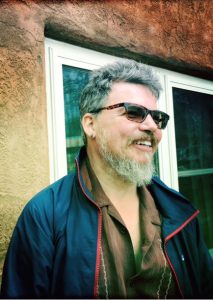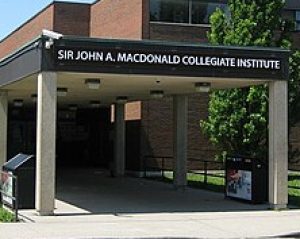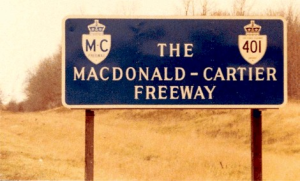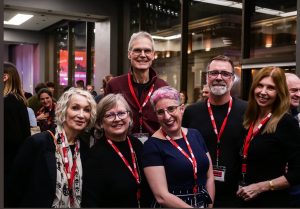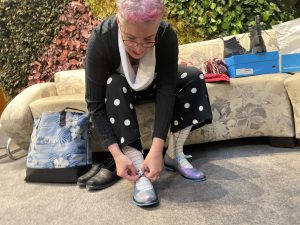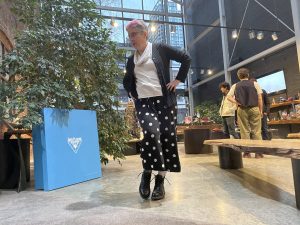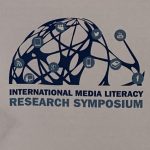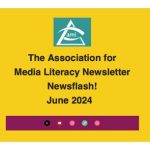Neil Andersen’s Media Education Summit 2023 Highlights
This was a very politicized gathering of people who are working hard to be woke. The conference theme derived from the work of Media Ecology Professor Antonio Lopez, who has been a long-time advocate for ecological thinking. The ecological/educological notion was woven through most of the conference activities. There were strong representations from marginalized groups and many discussions about social justice.
Ironically, the conference itself was an example of media bias as well as an examination of biases. But rather than subtly including them or trying to deny them, they were openly acknowledged. Specifically, ecological and social justice were openly foregrounded. Following are some of my conference highlights.
It was suggested—on more than one occasion—that media literacy education might be unwittingly contributing to the public’s distrust of journalism and government. Specifically, media literacy education encourages students to practice “healthy scepticism.” Healthy scepticism means that all information should be treated as suspect and interrogated before it is believed. If that position and practice becomes mainstream, it could lead to a general distrust of authority or shift people’s thinnking from scepticism to cynicism. Michael Hoechsmann (Lakehead University) made this observation in his workshop on the 2022 Ottawa truck protest. (Gateways and radicalization: The rhetoric of anti-vaxx) dana boyd has made a similar observation in You Think You Want Media Literacy… Do You?
What to do? How might media literacy education teachers prevent healthy scepticism from sliding into unhealthy cynicism? This is an ongoing conundrum and challenge for media literacy educators. Many people prefer reductive, simple answers to the current social and technological challenges. Media literacy learning is complex and often hard work.
The issue of scepticism cf. cynicism needs to be addressed directly with students. Additionally, the roles of news media and politicians in affecting the shift from scepticism to cynicism needs to be explored. Some politicians work hard to discredit journalism so that they can promote specific agendas without criticism, some of which are not in the public interest. These factors must be revealed and analyzed. Three Media Literacy Key Concepts apply: media construct versions of reality, audiences negotiate meanings and media contain values messages. Rich and useful discussions will help students understand this crucial issue.
Amanda Levido and Michael Dezuanni (Queensland University of Technology) presented a Primary unit to help students understand and appreciate curating. (Developing children’s algorithmic literacies through curatorship as media literacy) They asked a group of Kindergarten students to photograph examples of technology in their school using instant cameras. Then they asked them to select and arrange the images on a clothesline, explaining why they had chosen and arranged the images as they had. It was a good example of supporting critical thinking among young students.
All too often adults mistakenly think that young children are not capable of understanding media literacy concepts. Children understand construction and audiences negotiate meanings completely. They know that they live in a constructed world of toys, screens and schools. Teachers just need to identify and introduce concepts that are appropriate to their lived experiences.
Using instant photos provided the Kinders with means of communication appropriate to their thinking and abilities: they can’t yet read or write words, so images and conversations are appropriate.
Julian McDougall (Centre for Excellence in Media Practice, Bournemouth University) convened a virtual panel (Creative Hubs, Activism and Media Literacy in the MENA Region). Sadly for me, it became an example of the ongoing friction between technical form and content. The international remote panelists were asked to respond to the same set of questions. But the form intruded mercilessly on the content. We watched online heads speaking over great distances in English dialects or via translation.
The voices were hard to hear because of the large-room acoustics and we couldn’t read lips for confirmation of what we heard because we saw the whole panel as a mosaic of small images rather than one speaker on a large screen. It was great to include people from developing nations and who could not attend in person, but the technological challenges/effects obfuscated the content badly. Video and audio qualities must be high when such panels convene. Real-time subtitles can also be used when possible.
‘Storylistening’ as a methodology for peacebuilding among young survivors of conflict and their communities in Colombia.
Karen Fowler-Watt (Centre for Excellence in Media Practice, Bournemouth University) presented a strategy used in a remote part of Columbia to help former child soldiers or war victims reintegrate into their communities. The idea grew from The Tree of Love, a book that was shared with the children. They were then asked to create their own versions of or additions to the story. The idea was to have them describe their traumas but also have the stories heard and acknowledged as part of the children’s psychic healing.
It was a powerful description of the usefulness of story and audience in the healing process. Telling our stories might be therapeutic, but teachers have to determine where the lines occur between healing and hurting. Sometimes children are not ready or do not want to be public about their traumas.
This presentation might have been the best example of media educology because it described healing uses of media experiences and production.
In YouTube as an ecology for peer pedagogies and media education – the case of Minecraft Let’s Player, Stampylonghead, Michael Dezuanni described the ongoing relationship between Stampy Longhead and his YouTube fans. It was a useful exegesis for me to understand and appreciate the interactions. It became especially interesting when Dr. Dezuanni explained that Stampy was asked to create some ‘educational’ videos, which were much more didactic and speaker-centred than his usual output. Making ‘educational’ media is always perilous because the didacticism can easily overshadow the entertainment value and sabotage it, making it boring. It is often better for educators to exploit mainstream/entertaining media experiences for learning opportunities. All media experiences are educational; teachers just need to imagine how to use them.
In Media Literacy Education for Law Enforcement Professionals, Dr. Renee Hobbs (Harrington School of Communication and Media at the University of Rhode Island) described a project that she had done with a Texas police academy. The police trainers were using 136 videos in their courses. Looking at the videos through a media literacy or cultural lens revealed that many—if not all of them—communicated biases to the police trainees. The biases were predominantly racially focused; some were classicist. Dr. Hobbs pointed this out to the trainers and helped them to become more culturally sensitive.
I thought that it might be a mistake to remove the videos from the training program as compared to discussing and identifying the various biases they were presenting. Even flawed media experiences can provide media literacy learning opportunities.
Canada is facing a similar dilemma: Sir John A. Macdonald, Canada’s first Prime Minister, has been identified as having practised racism during his tenure. Specifically, he took decisions that starved and killed many Indigenous people and was a participant in Canada’s shameful Residential Schools program. Canada is wrestling with what to do about the many statues erected to his memory as well as at least 5 schools and one major highway bearing his name. Should these be removed/renamed? Or should they remain as testimony to previous injustices, with explanations appended to the plaques, etc.? If Canada removes/renames, is it simultaneously hiding its sins? Can the country grow if it erases these memories? Should it own its transgressions? The debates continue, with some names removed/replaced and some remaining.
A big thank you to the McLuhan Foundation, Simon Fraser University and the Centre for Excellence in Media Practice, Bournemouth University teams, especially Carolyn Wilson, Stuart Poyntz, and Julian McDougall for convening a wonderful international educational experience.
Appendix
We took a short Barry’s Wander-inspired excursion to the John Fluevog shoe store, where we found a wealth of cultural studies opportunities.
Diana Maliszewski took one for the team by trying on 3 pair.
She is such a good sport!


